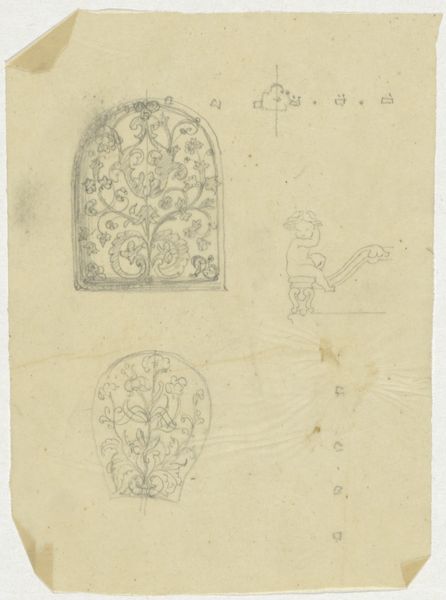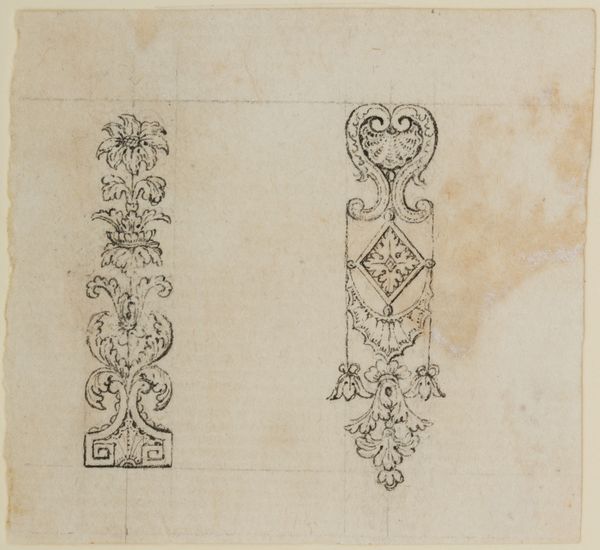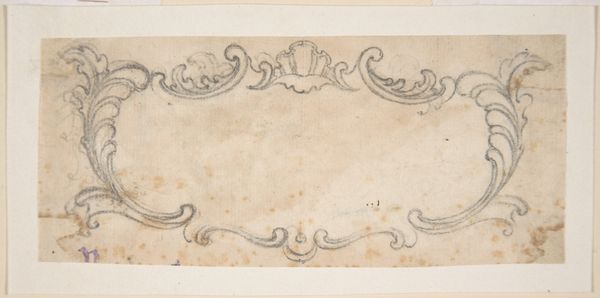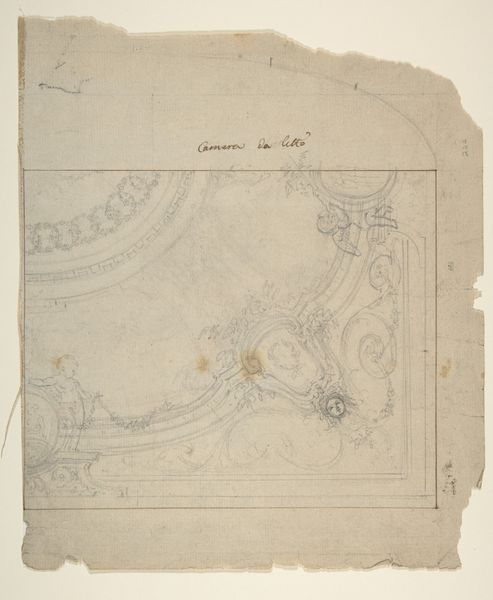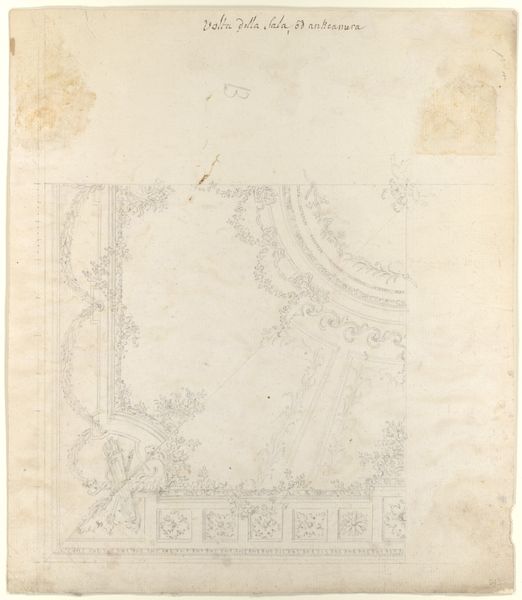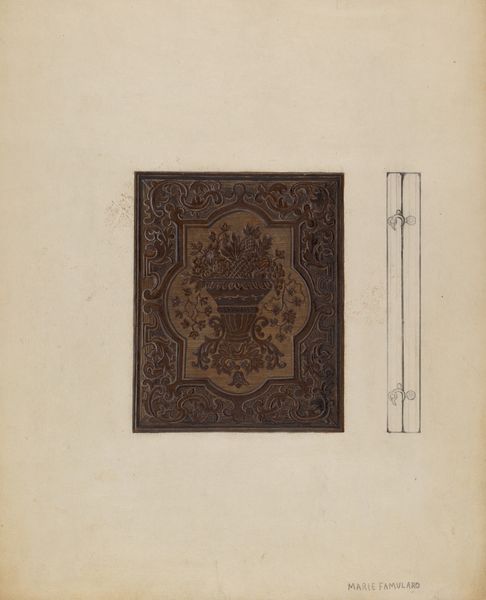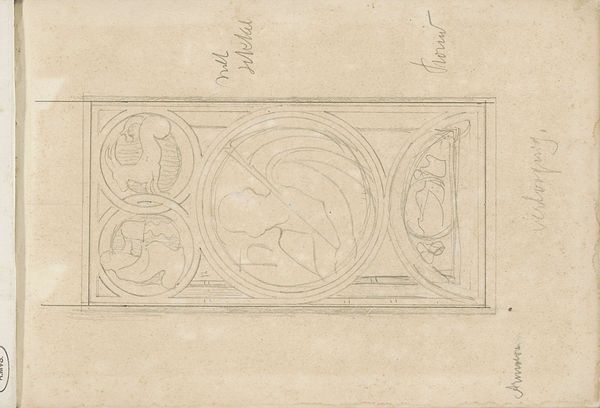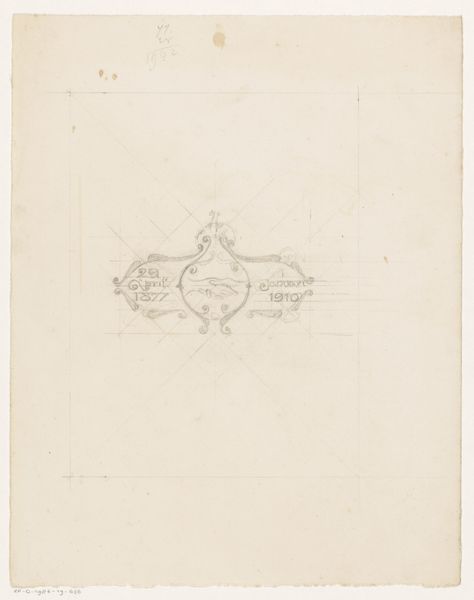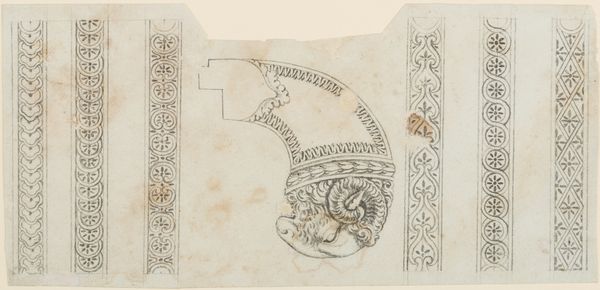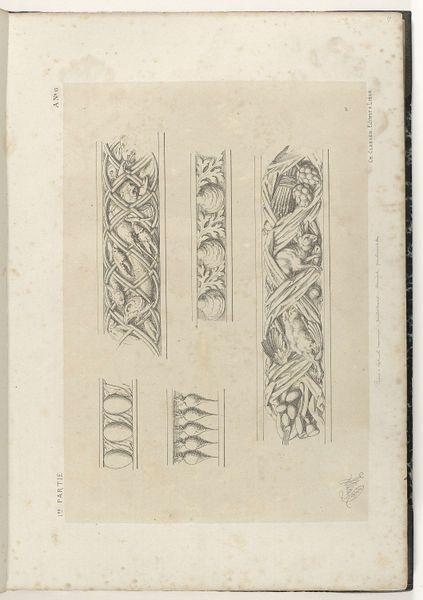
Dimensions: height 60 mm, width 79 mm
Copyright: Rijks Museum: Open Domain
Curator: Immediately, the delicacy strikes me. The linear precision contrasts so fascinatingly with the organic nature of the design. Editor: Here we have "Ontwerp voor achthoekige broche met opengewerkte bladertakken," or "Design for an octagonal brooch with openwork leaf branches," attributed to Henri Cameré and dating roughly from 1864 to 1894. It’s rendered with ink and coloured pencil on paper. Curator: It's evocative of that burgeoning Arts and Crafts aesthetic, a real sense of craftsmanship married with an almost medieval heraldic sensibility. Are those griffins flanking the design? There's an appealing symmetry, too. Editor: Absolutely, you can really see the principles of the Arts and Crafts movement at play. Notice the emphasis on handcrafted design—this wasn’t about mass production, but highlighting the skill and labor involved in creating something beautiful. It’s so clearly designed to showcase meticulous work, and the relative cost for someone acquiring such work during its moment. Curator: That openwork—literally piercing the metal to reveal the negative space—speaks volumes. The stylized leaves wrapping around, almost embracing those heraldic figures, really grounds the composition, lending a tangible sense of symbolic protection, wouldn’t you agree? Editor: Definitely protection, I am glad you say so. I'd also push the materials aspect; consider the actual brooch in precious metal, perhaps silver or gold, and the social signaling it enables as status object. These luxury pieces often reinforced very established power dynamics through adornment. It seems very clear that Cameré had patrons from the aristocracy. Curator: Yes, one could explore that thread! But the enduring visual language! How those design principles are embedded in our collective aesthetic memory, consistently resurfacing in modern design! Even today, there's this powerful subconscious resonance with its form, right? Editor: Yes, seeing the way the design becomes an actual material piece—considering that act of labour, who is included, excluded in that process gives me plenty to continue pondering.
Comments
No comments
Be the first to comment and join the conversation on the ultimate creative platform.

